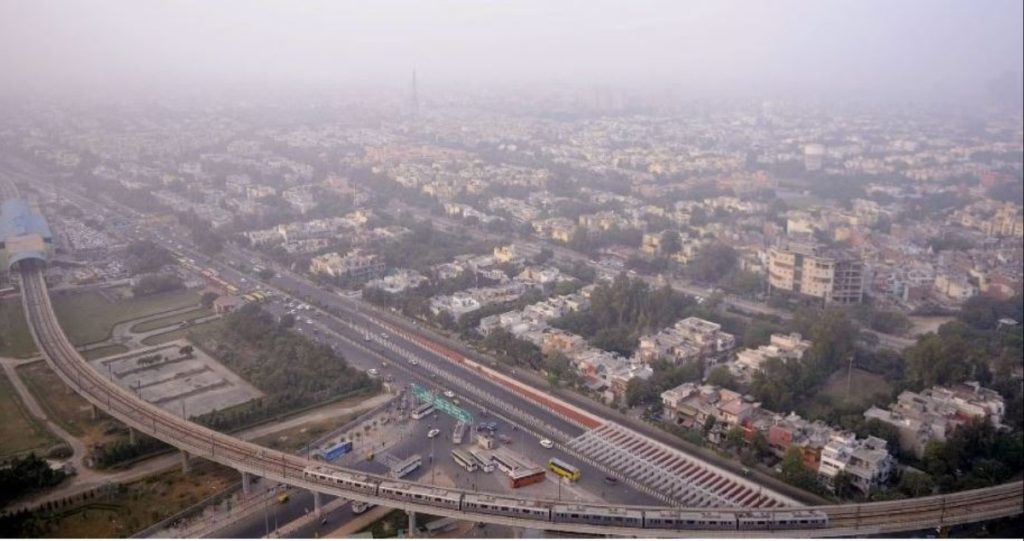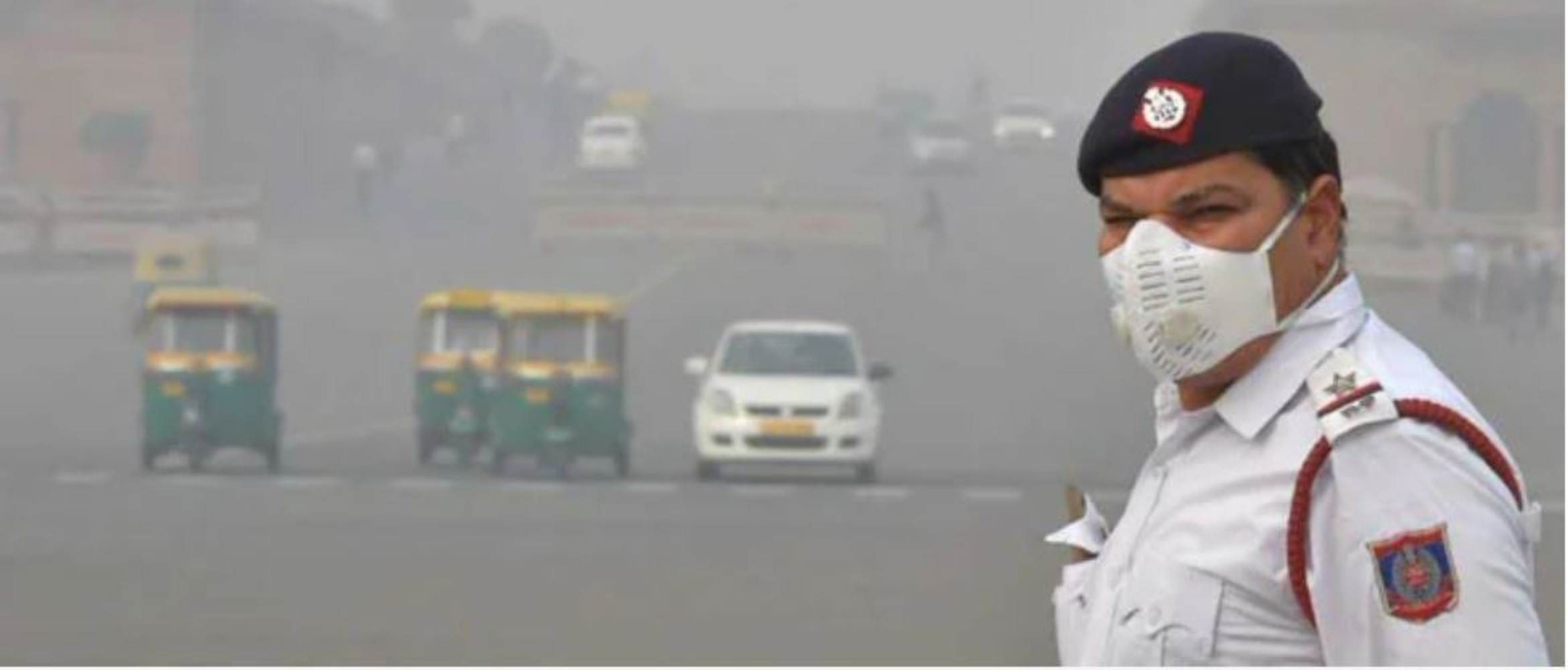Devanjana Mukherjee, Khabri Media
During the winter months, a temperature inversion effect occurs, where the cooler air at ground level traps pollutants in the atmosphere.

Pic: Social Media
Delhi-NCR’s air quality was recorded in the ‘poor’ category for the fourth consecutive day on Thursday and any improvement is unlikely soon. According to the Centre’s Air Quality Early Warning System, the city’s air quality is likely to oscillate between the ‘poor’ and ‘very poor’ categories over the next three to four days.
MUST READ: Fine on private vehicles in NCR
The average AQI was 235 in neighboring Ghaziabad, 254 in Faridabad, 230 in Gurugram, 191 in Noida, and 260 in Greater Noida. Delhi’s index stood at 256 during the evening today whereas on Tuesday and Wednesday, it recorded at 243 and 220, respectively.
Despite numerous efforts to combat air pollution, Delhi-NCR’s air quality remains poor, and any significant respite seems unlikely in the near future. One of the significant contributing factors to the area’s air pollution is its geographical location and climate.
The region is landlocked and situated in the Indo-Gangetic plain, which acts as a natural basin, trapping pollutants within the region. During the winter months, a temperature inversion effect occurs, where the cooler air at ground level traps pollutants in the atmosphere. This meteorological phenomenon exacerbates the air quality issues during the winter season.

Pic: Social Media
Other than geographical factors, there are several reasons for such hazardous pollution.
Reasons for Pollution
- Vehicular Emissions: Despite efforts to promote cleaner fuels and stricter emission norms, the sheer volume of vehicles, many of which are older and poorly maintained, continues to release a significant amount of pollutants into the atmosphere.
- Industrial Activities: Home to a substantial number of industries, these are major sources of pollution as Many of them do not adhere to environmental regulations, and monitoring and enforcement remain a challenge.
- Agricultural Residue Burning: In the neighboring states, farmers burn crop residues after harvest, releasing large quantities of pollutants into the atmosphere.
- Lack of Public Awareness: A lack of public awareness and indifference towards the environment is another barrier to improving air quality. It is essential for Delhi’s population to embrace cleaner and more sustainable practices in transportation, waste management, and overall lifestyle.
Delhi-NCR’s air quality remains a persistent problem, primarily due to its unique geographical and climatic factors, vehicular emissions, industrial activities, construction and dust pollution, agricultural residue burning, inadequate waste management, and political and administrative challenges.
While there have been efforts to combat air pollution, achieving a significant and sustained improvement in air quality remains a daunting challenge. Initiatives to educate the public about the health risks associated with poor air quality and the importance of individual contributions to air quality improvement are essential.

Pic: Social Media
The Commission for Air Quality Management (CAQM), a statutory body responsible for proactively implementing the pollution control plan known as the Graded Response Action Plan (GRAP), had on Saturday directed authorities in the NCR to increase parking fees to discourage private transport and enhance the services of CNG or electric buses and metro trains amid a likely increase in pollution levels.
GRAP categorises actions into four stages: Stage I ‘poor’ (AQI 201-300); Stage II ‘very poor’ (AQI 301-400); Stage III ‘severe’ (AQI 401-450); and Stage IV ‘severe plus’ (AQI >450). This action is part of Stage II of GRAP which is implemented when Delhi’s AQI is predicted to turn ‘very poor’.




